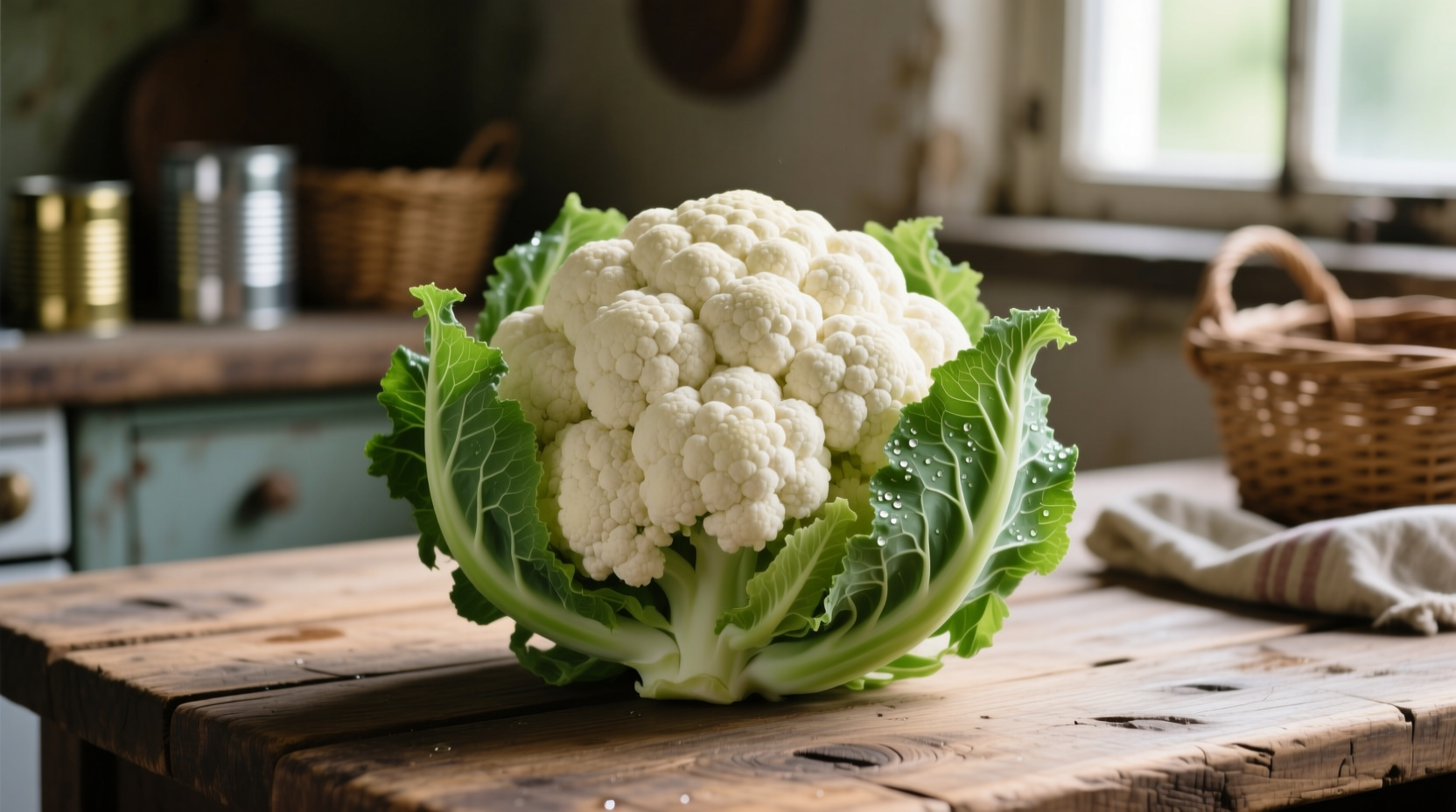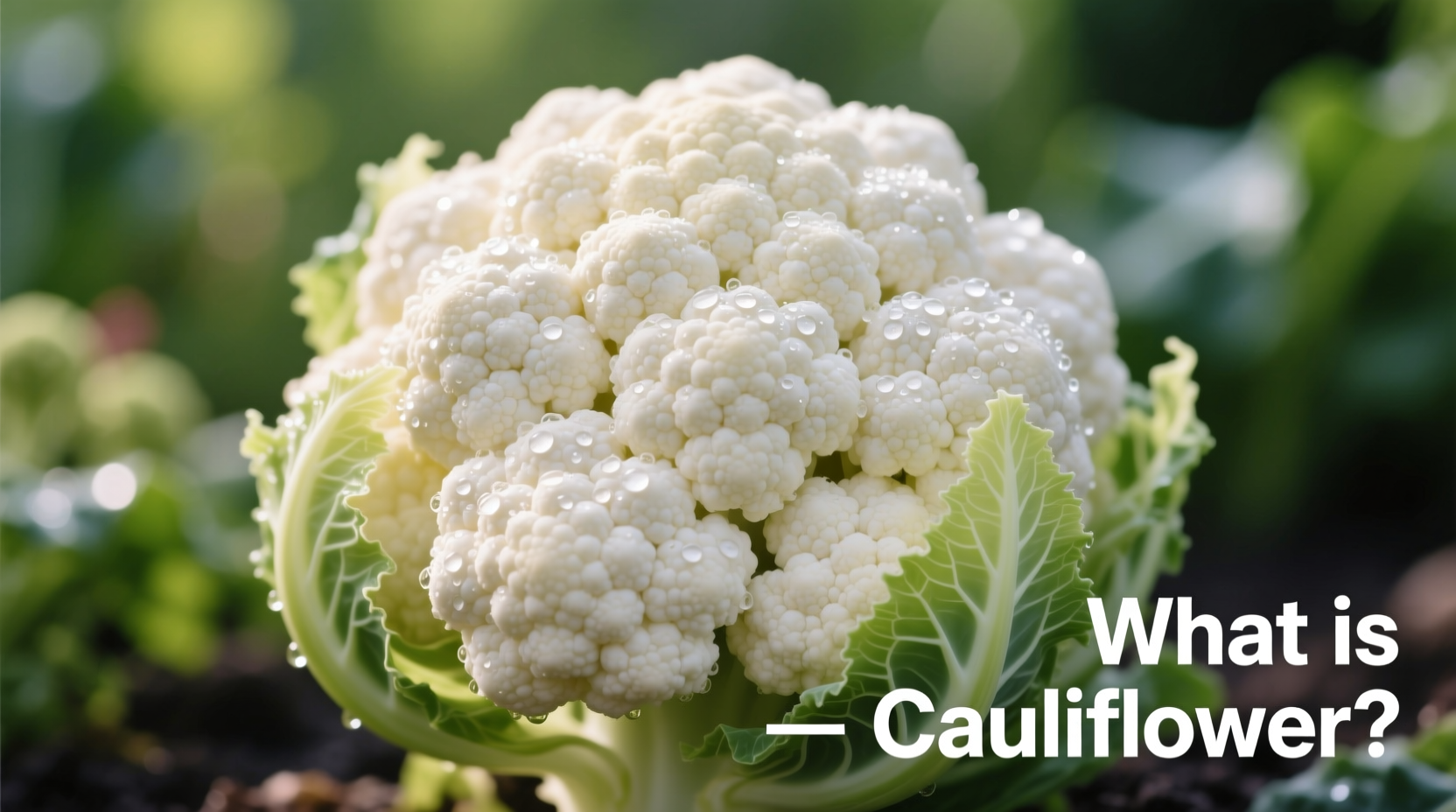Your Essential Guide to Understanding Cauliflower
When you search what are cauliflower, you're probably looking for more than just a basic definition. You want to understand why this versatile vegetable has become a kitchen staple worldwide, how it differs from similar produce, and what makes it nutritionally special. Let's explore everything you need to know about this remarkable cruciferous vegetable.
Botanical Identity: More Than Just a White Vegetable
Cauliflower (Brassica oleracea var. botrytis) belongs to the Brassicaceae family, sharing lineage with broccoli, kale, and cabbage. Unlike its green cousin broccoli, cauliflower features a dense cluster of immature flower buds called the curd, protected by thick green leaves that prevent chlorophyll development, resulting in its characteristic white color.
The vegetable's scientific name reveals its nature: botrytis comes from the Greek word for "grape cluster," describing its distinctive flower structure. While white varieties dominate supermarket shelves, heirloom types include orange, purple, and green cultivars, each offering unique phytonutrient profiles.
Visual Identification and Common Varieties
Recognizing quality cauliflower involves examining several features:
- Head (curd): Should be compact, firm, and pure white (or characteristic color for colored varieties)
- Leaves: Fresh green leaves indicate recent harvest
- Size: Typically 5-7 inches in diameter for standard varieties
- Weight: Heavier heads indicate better moisture content and freshness
| Variety | Color | Distinctive Features | Best Uses |
|---|---|---|---|
| Traditional White | White | Mildest flavor, most widely available | Ricing, mashing, roasting |
| Cheddar (Orange) | Orange | Higher beta-carotene content | Steaming, salads, color contrast |
| Violet Queen | Purple | Anthocyanin-rich, turns green when cooked | Raw consumption, quick cooking |
| Alverda | Green | Broccoli-cauliflower hybrid, nuttier flavor | Stir-fries, grilling |
Nutritional Powerhouse: What Makes Cauliflower Special
One cup (100g) of raw cauliflower delivers remarkable nutritional benefits without breaking your calorie bank. This cruciferous vegetable contains just 25 calories while providing significant amounts of essential nutrients that support multiple bodily functions.
According to USDA FoodData Central, cauliflower's nutritional profile includes:
- Vitamin C: 77% of daily value - crucial for immune function and skin health
- Vitamin K: 20% of daily value - essential for blood clotting and bone metabolism
- Folate: 14% of daily value - important for cell division and DNA synthesis
- Fiber: 3g per cup - supports digestive health and satiety
- Choline: 14% of daily value - vital for brain development and function
What truly sets cauliflower apart are its glucosinolates - sulfur-containing compounds that convert to bioactive isothiocyanates like sulforaphane during chopping or chewing. Research from the Linus Pauling Institute at Oregon State University confirms these compounds activate cellular defense systems that protect against oxidative stress and inflammation (lpi.oregonstate.edu).
From Ancient Fields to Modern Kitchens: A Brief History
Cauliflower's journey spans centuries and continents:
- 6th Century BCE: Early forms appear in ancient Greek and Roman agriculture
- 600 CE: Documented cultivation in the Middle East
- 1500s: Introduced to Europe through Turkish traders
- 1600s: Gains popularity in French and Italian cuisine
- 1800s: Brought to North America by European settlers
- 2010s: Experiences resurgence as a low-carb alternative to grains and starches
Culinary Versatility: Beyond the Basics
Chef Antonio Rodriguez explains: "Cauliflower's neutral flavor profile and unique texture make it incredibly adaptable. When raw, it offers a pleasant crunch; roasted, it develops nutty sweetness; and processed, it can mimic textures from rice to mashed potatoes."
Professional chefs utilize cauliflower in three primary ways:
Whole Vegetable Preparation
Rosette roasting preserves the vegetable's structure while caramelizing natural sugars. Cut cauliflower into thick "steaks" with the core intact, brush with olive oil, and roast at 425°F for 20-25 minutes until golden brown.
Texture Transformation
Through processing techniques, cauliflower can replace higher-carb ingredients:
- Ricing: Pulse florets in food processor for grain-free "rice"
- Mashing: Steam and blend with minimal liquid for potato alternative
- "Steak" preparation: Slice thickly for grilling or roasting
Flavor Carrier Applications
Cauliflower readily absorbs surrounding flavors, making it ideal for:
- Buffalo cauliflower bites
- Cauliflower pizza crust
- Creamy soups and sauces
- Raw vegetable platters with dip

Health Considerations and Contextual Boundaries
While cauliflower offers numerous health benefits, certain considerations affect its suitability:
Digestive Sensitivity
The high fiber content and raffinose carbohydrates in cauliflower can cause gas and bloating in sensitive individuals. Gradually increasing consumption allows your digestive system to adapt. Those with irritable bowel syndrome (IBS) following a low-FODMAP diet should limit portions to 1/4 cup cooked, as recommended by Monash University's FODMAP research (monashfodmap.com).
Thyroid Function Considerations
Like other cruciferous vegetables, cauliflower contains goitrogens that may interfere with thyroid function when consumed in extremely large quantities. However, the American Thyroid Association confirms that normal dietary consumption poses no risk to individuals with healthy thyroid function (thyroid.org).
Selecting and Storing for Maximum Freshness
Follow these professional tips to ensure peak quality:
- Selection: Choose heads with tight, compact curds and crisp green leaves
- Storage: Keep whole heads in a perforated plastic bag in the refrigerator's crisper drawer
- Shelf life: Properly stored, cauliflower remains fresh for 1-2 weeks
- Freezing: Blanch florets for 3 minutes before freezing to preserve texture and nutrients
Why Nutrition Experts Recommend Regular Consumption
Multiple studies published in the American Journal of Clinical Nutrition link regular cruciferous vegetable consumption to reduced risk of certain chronic conditions. The National Cancer Institute notes that population studies consistently show lower cancer rates among people who consume higher amounts of cruciferous vegetables, though more research is needed to establish direct causation (cancer.gov).
What makes cauliflower particularly valuable is its combination of fiber, antioxidants, and unique phytochemicals that work synergistically to support cellular health. Unlike many processed vegetable alternatives, cauliflower maintains its nutritional integrity through various cooking methods.











 浙公网安备
33010002000092号
浙公网安备
33010002000092号 浙B2-20120091-4
浙B2-20120091-4